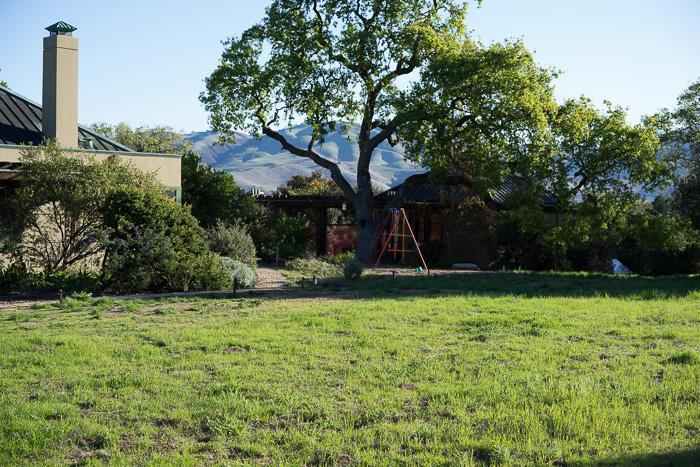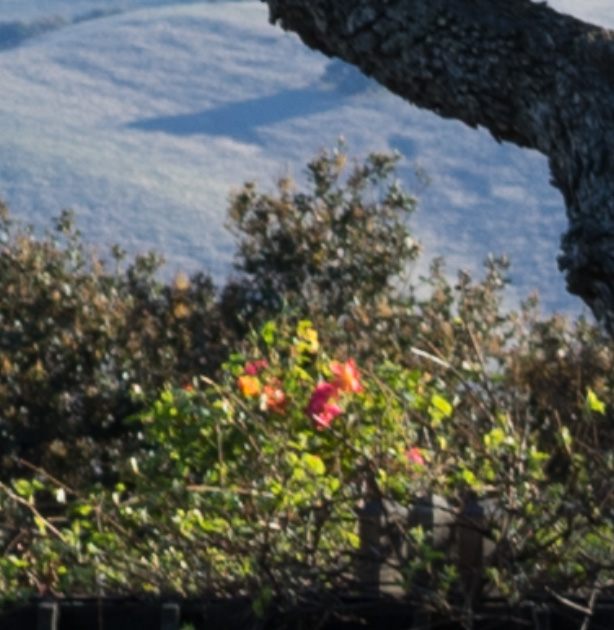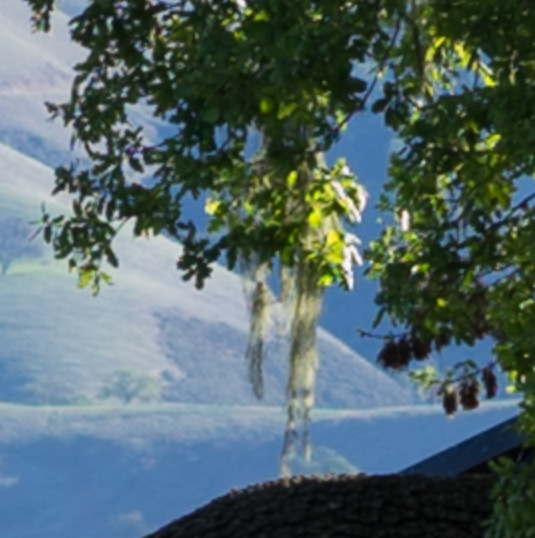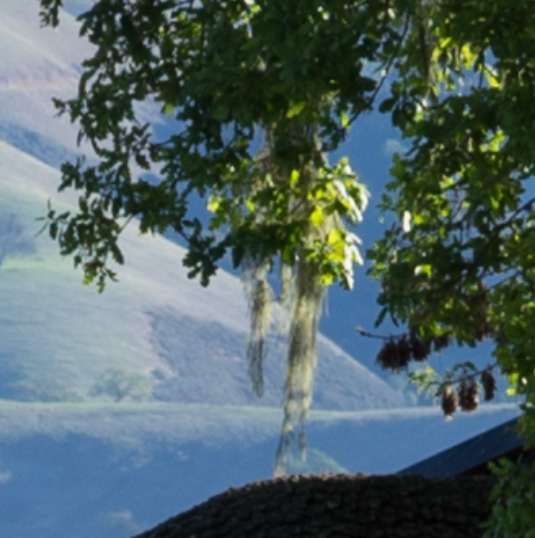Enough of these charts. I’ve been asked for some real-world handheld images from the Sony a7 and a7R .
Happy to oblige. I made five images with each camera, using the Zony 55mm f/1.8 lens in single-shot AF mode. Drive set to single shot to get all 13 bits. ISO 100. 1/125 @ f/6.3. I tossed the best and the worst. That left three. I threw out the best and the worst of those. That left one from each camera. Call those the typical images.
To neutralize the resolution differences between the cameras, I res’d up all images to 12000 pixels wide, using bilinear interpolation.
The overall scene (with the a7R):
A tight crop of the typical a7 image:
A tight crop of the typical a7R image:
You decide which is sharper.
Here’s a different crop of the best a7 image:
And the best a7R shot:
The best a7R image is sharper than the best a7 image, but by so little that it’s hard to see it in the JPEGs. The worst a7R image wasn’t as sharp as the worst a7 image.
As usual with these tight crops, you can’t trust the EXIF data, since I brought the images into Photoshop, scaled them, then created a stack with the images so I could do the alignment. I turned layers on and off and exported as JPEGs. When Photoshop does that, the EXIF data it generates is that of the bottom layer.





Thanks Jim for this very revealing (urgh…pun) review.
I’m currently having first-world hand-wringing about whether I should get the A7 or A7r. Seems there may be so little in it after all, especially when I read comments about the A7’s better ‘keeper’ rate due to more responsive auto-focus, less shutter-shock etc. ??
Printing even up to A2 would probably obfuscate any remaining differences.
Great site too, very informative, thanks.